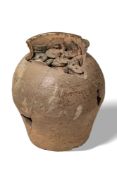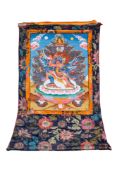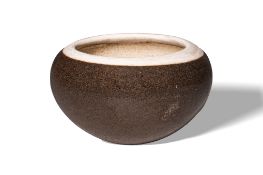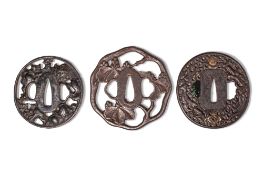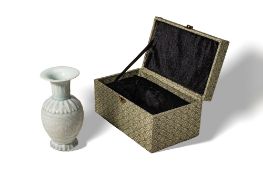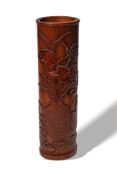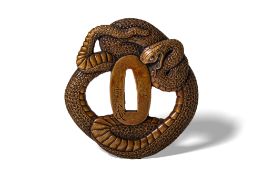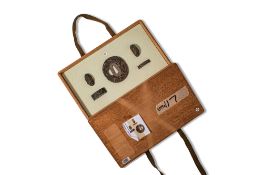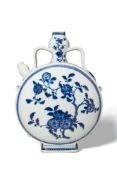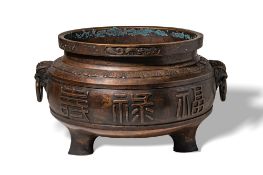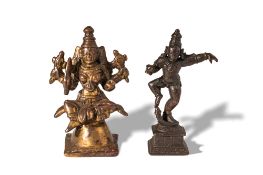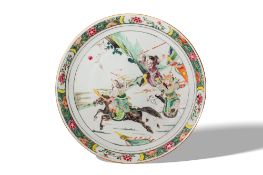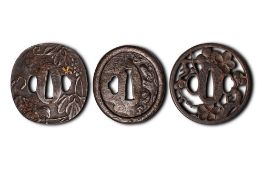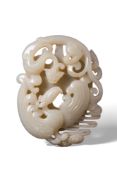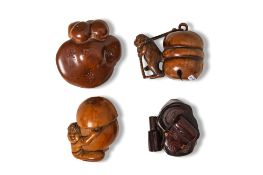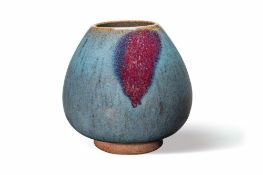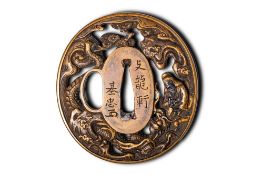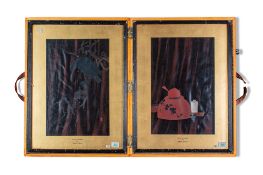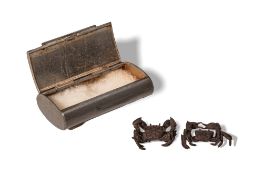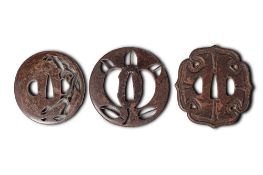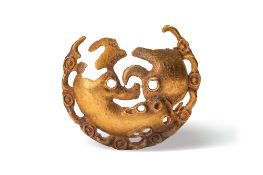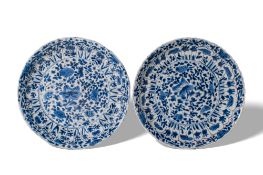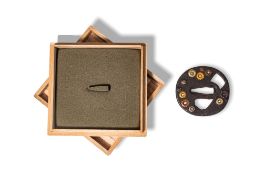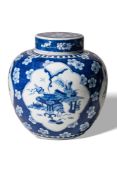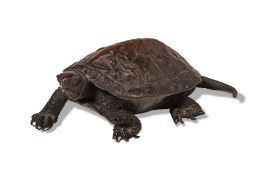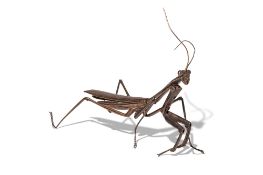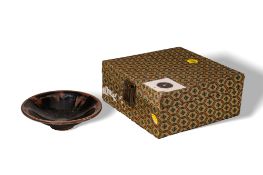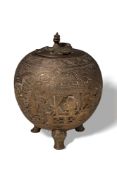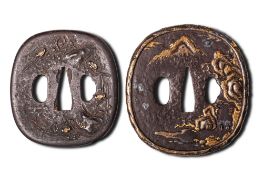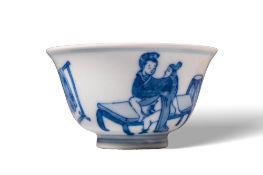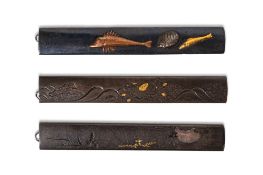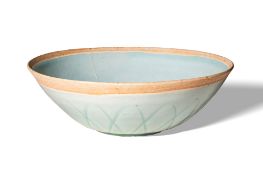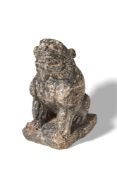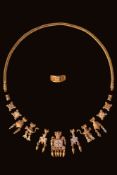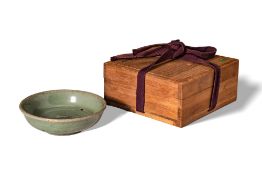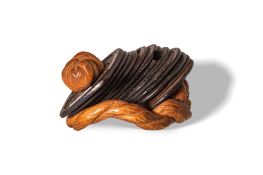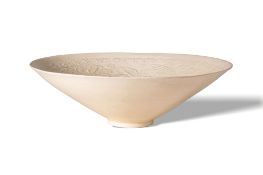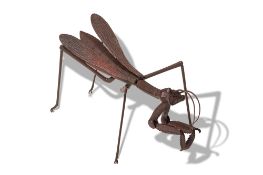Song Dynasty, Ca. AD 960 - 1279. An earthenware storage jar containing a dense cache of Chinese bronze coins. The globular vessel, now partially b...
- Startseite
- Suchergebnisse
*
Verfeinern Sie Ihre Suche
Schätzpreis
Auktionsort
Kategorie
- Spielzeug, Modelle & Puppen (12703)
- Varia (11705)
- Schmuck (11007)
- Gemälde & Mischtechniken (8510)
- Druckgrafiken & Multiples (4783)
- Waffen, Rüstungen & Militaria (4293)
- Porzellan (3341)
- China (3046)
- Skulpturen (3024)
- Bücher, Manuskripte & Schriften (2886)
- Möbel (2648)
- Zeichnungen & Pastelle (2164)
- Münzen (2059)
- Armbanduhren, Taschenuhren & Zubehör (2031)
- Silber & Versilbertes (1936)
- Keramik, Fayencen (1933)
- Griechische, Römische, Ägyptische & andere Antiquitäten (1891)
- Aquarelle (1306)
- Glas & Kristall (1189)
- Kunst (1179)
- Dekorative Kunst (942)
- Japan (910)
- Fotografie (862)
- Vintage Fashion (850)
- Teppiche & Läufer (825)
- Wein & Spirituosen (797)
- Ethnographie & Stammeskunst (772)
- Asiatische Kunst (716)
- Großuhren (702)
- Sport Memorabilia & Equipment (702)
- Briefmarken (589)
- Jugendstil & Art Déco (556)
- Musikinstrumente & Memorabilia (545)
- Lampen (529)
- Präparate & Naturkundliches (400)
- Metalle (388)
- Sakrales & Volkskunst (355)
- Historische Baustoffe & Elemente (314)
- Russische Kunst (199)
- Uhren, Armbanduhren, Taschenuhren & Schmuck (162)
- Islam (159)
- Design (155)
- Landkarten (143)
- Oldtimer, Motorräder & Automobile (129)
- Schreibgeräte (122)
- Küchenutensilien (104)
- Vintage Fashion & Textilien (99)
- Allgemeines Kollektiv (95)
- Kameras & Fotoausrüstungen (90)
- Indien (82)
- Wissenschaftliche Instrumente (81)
- Textilien (71)
- Unterhaltung Memorabilia (40)
- Eisenbahngeschichte (30)
- Werkzeug (25)
- Banknoten & Wertpapiere (18)
- Barometer (5)
- Kühlschränke (3)
Künstler / Marke
- Märklin (4732)
- Meissen (1293)
- Porcelain Makers & Brands (1136)
- Watch Brands (972)
- Roco-Modelleisenbahnen (571)
- Vintage Fashion Designers (483)
- Ceramics Manufacturers / Genre (439)
- Schuco (418)
- Qing (411)
- Qing Dynasty (411)
- Elastolin (369)
- Fleischmann (329)
- Rolex (322)
- Lineol (302)
- Roman (284)
- KPM (244)
- Star Wars (235)
- LGB garden railways (234)
- Meiji (232)
- Trix (217)
- Cartier (216)
- Oskar Kokoschka (215)
- Royal Doulton (215)
- Bing (203)
- Omega (202)
- Rosenthal (198)
- Chanel (194)
- Wiking (194)
- Meiji Period (185)
- Glassware Makers / Brands (180)
- Ming (180)
- Ming Dynasty (180)
- Louis Vuitton (179)
- Edo (175)
- Lima (153)
- Kangxi (152)
- Rudolf (152)
- Egon Schiele (147)
- Edo Period (139)
- Gustav Klimt (139)
- Western Asiatic (133)
- Song (128)
- Steiff (128)
- British School (123)
- Spirits Makers / Brands (121)
- Hornby (120)
- Pablo Picasso (117)
- Hermes (111)
- Karl Lagerfeld (110)
- England (107)
- Imari (105)
- Gama Toys (103)
- Palitoy (96)
- Chopard (94)
- Albrecht Dürer (93)
- Dresden (91)
- Kenner Products (88)
- Streichholzschachtel (87)
- Greek (85)
- Erich Heckel (84)
- Macallan (84)
- Nike (84)
- Tang (84)
- Tang Dynasty (84)
- Lehmann (83)
- Dent (82)
- Friedensreich Hundertwasser (80)
- Kandinsky (80)
- Murano (80)
- Han (79)
- Han Dynasty (79)
- Derby (78)
- Nymphenburg (78)
- Cecil Beaton (76)
- Royal Copenhagen (76)
- Tiffany & Co. (75)
- Speyside (74)
- Rembrandt (72)
- Tibetan (71)
- Bulgari (70)
- Egypt (67)
- Hummel (66)
- Paul Klee (66)
- Byzantine (64)
- Hiroshige (64)
- Otto Dix (61)
- Rivarossi (61)
- Siku (61)
- Wedgwood (61)
- Breitling (59)
- Dinky Toys (59)
- Deutsch (59)
- Heimo Zobernig (59)
- Victor Vasarely (59)
- Marc Chagall (58)
- Wassily Kandinsky (58)
- Ernst Ludwig Kirchner (54)
- St. Louis (53)
- royal crown (53)
- Craigellachie (52)
- Goethe (51)
- Delft (48)
- Emil Nolde (47)
- Gucci (47)
- Wempe (47)
- Ireland (46)
- Longines (46)
- Henri Matisse (45)
- English School (44)
- Heuer (44)
- Max Liebermann (44)
- Umbro (44)
- Sèvres (43)
- Andy Warhol (42)
- Bachmann (42)
- Adidas (41)
- Jouef (41)
- Kunisada (41)
- TAG Heuer (41)
- Zhou (41)
- Zhou Dynasty (41)
- Corgi (40)
- Peter Paul Rubens (40)
- Wilkens (40)
- Disney (39)
- Germany (39)
- Jaeger-LeCoultre (39)
- Pokemon (39)
- Tottenham Hotspur (39)
- Tudor (39)
- Karuizawa (38)
- Braun (36)
- IWC (36)
- Junghans (36)
- Limoges (36)
- Max Ernst (36)
- Patek Philippe (36)
- Arnulf Rainer (35)
- Van Cleef & Arpels (35)
- Bandai (34)
- Beswick (34)
- Breguet (34)
- Celtic (34)
- France (34)
- Glashütte (34)
- Lego (33)
- Guy Taplin (32)
- Lalique (32)
- Lovis Corinth (32)
- Technofix (32)
- Asmat (31)
- Gerhard Richter (31)
- Chikanobu Yoshu (30)
- Christian Dior (30)
- Classic Car & Vehicle Brands (30)
- Gallé (30)
- Joan Miró (30)
- Caliber (29)
- Fahrräder (29)
- George Grosz (29)
- Giovanni Battista Piranesi (29)
- Maria Lassnig (29)
- Sheffield United (29)
- Swarovski (29)
- Yoruba (29)
- Edvard Munch (28)
- Gottfried Helnwein (28)
- Liverpool (28)
- Staffordshire (28)
- August Gaul (27)
- Ivory Coast (27)
- Kammer & Reinhardt Puppen (27)
- MacPhail (27)
- Minichamps (27)
- Ptolemaic (27)
- Seiko (27)
- Viking (27)
- WMF (Württembergische Metallwarenfabrik AG) (27)
- Worcester (27)
- Alfred Kubin (26)
- Chelsea (26)
- Jaeger (26)
- Villeroy & Boch - Mettlach (26)
- Virginie Viard (26)
- Akan (25)
- Albert Reuss (25)
- Fabergé (25)
- Georg Jensen (25)
- Kathe Kruse (25)
- Luristan (25)
- Maiolica (25)
- Majolika (25)
- Max Beckmann (25)
- Uefa (25)
- Anthony Van Dyck (24)
- Cleef and Arpels (24)
- Continental School (24)
- Goebel Porzellan (24)
- Italian School (24)
- Salvador Dali (24)
- Salvador Dalí (24)
- Simon & Halbig (24)
- Waterford Crystal (24)
- West Ham (24)
- Willem Van De Velde (24)
- Christo (23)
- French School (23)
- Moorcroft (23)
- Atlas (22)
- Conrad Felixmüller (22)
- Franz West (22)
- West Ham United (22)
- Canada (21)
- Daum (21)
- Dayak (21)
- Glenlivet (21)
- Goya (21)
- Lladro (21)
- Max Pechstein (21)
- Rado (21)
- Vienna (21)
- villeroy (21)
- Gerhard Marcks (20)
- Isfahan (20)
- Longquan Celadon (20)
- Maurice Lacroix (20)
- Piaget (20)
- Rembrandt Van Rijn (20)
- Roy Lichtenstein (20)
- Sonia Delaunay (20)
- Taisho (20)
- Utagawa Kunisada (20)
- Zenith (20)
- Heubach (19)
- Käthe Kruse (19)
- Lyonel Feininger (19)
- Mainline (19)
- Mettoy Playcraft (19)
- Otto Piene (19)
- Tissot (19)
- Vincent Van Gogh (19)
- Audemars Piguet (18)
- Baccarat (18)
- Bactrian (18)
- Corning (18)
- Dieter Roth (18)
- Dogon (18)
- Ebel (18)
- Erwin Wurm (18)
- FIFA (18)
- Gillow (18)
- Hasbro (18)
- Mesopotamian (18)
- Pierre Soulages (18)
- Pierre-Auguste Renoir (18)
- Pipilotti Rist (18)
- Second World War (18)
- Utagawa Hiroshige (18)
- Wallendorf (18)
- André Derain (17)
- Baseball (17)
- Bauer (17)
- Joseph Beuys (17)
- Knoll (17)
- Mappin & Webb (17)
- Marx Züge (17)
- Scotland (17)
- Showa (17)
- The Beatles (17)
- Tiffany Studios (17)
- Wine Makers / Brands (17)
- Armand (16)
- Armand Marseille Dolls (16)
- Babylonian (16)
- Baume & Mercier (16)
- Charles (16)
- Christofle (16)
- Dutch School (16)
- Franz Kafka (16)
- Gillows (16)
- Honda (16)
- Italy (16)
- Kashan (16)
- Manchester United (16)
- Ottoman (16)
- Qajar (16)
- Raymond Weil (16)
- Tongzhi Porcelain (16)
- Val Saint Lambert (16)
- Asian (15)
- China (15)
- Columbia (15)
- Dublo (15)
- Elamite (15)
- Flemish School (15)
- Frankenthal (15)
- Guinea (15)
- Hans Arp (15)
- Karl Schmidt-Rottluff (15)
- Lladró (15)
- Lotto (15)
- Lucio Fontana (15)
- St Louis (15)
- Royal Worcester (15)
- Amlash (14)
- Dunhill (14)
- G Plan (14)
- Georges Braque (14)
- Herman Miller (14)
- Niger (14)
- Prada (14)
- Rodin (14)
- Royal Navy (14)
- Showa Period (14)
- Solido (14)
- The Rolling Stones (14)
- Villeroy and Boch (14)
- Wembley (14)
- Émile Gallé (14)
- Alexander Calder (13)
- Alfred Stieglitz (13)
- Aristide Maillol (13)
- Bakongo (13)
- Baume and Mercier (13)
- Bburago (13)
- Betsey Johnson (13)
- Boucheron (13)
- Girard-Perregaux (13)
- Heritage (13)
- Katharina Grosse (13)
- Kosta Boda (13)
- Kurt Schwitters (13)
- Ludwigsburg (13)
- Man Ray (13)
- Martell (13)
- Meccano (13)
- Royal Copenhagen (13)
- Shang (13)
- Triang (13)
- Vacheron-Constantin (13)
- Valjoux (13)
- Archibald Thorburn (12)
- Banksy (12)
- Blancpain (12)
- Bow (12)
- Bulova (12)
- Busch (12)
- Citizen (12)
- Decca Records (12)
- Delvaux (12)
- Dom Pérignon (12)
- Dugena (12)
- Edward Steichen (12)
- Ernst Barlach (12)
- Goldsmiths Company (12)
- Henry Moore (12)
- Jean Michel Basquiat (12)
- Jean-Michel Basquiat (12)
- Joan Miro (12)
- Joshua Reynolds (12)
- Kosta (12)
- Latour (12)
- MTH Elektrische Züge (12)
- Manchester City (12)
- Marvel (12)
- Mettlach (12)
- Olympics (12)
- Picasso (12)
- Pierre Alechinsky (12)
- Pieter Bruegel (12)
- Senufo (12)
- Thomas Mann (12)
- Venini (12)
- YES (12)
- Baoulé (11)
- Britains (11)
- Celine (11)
- Dan (11)
- Eug�ne Verboeckhoven (11)
- Fendi (11)
- Fulham (11)
- Guido Reni (11)
- Hermann Hesse (11)
- Hibiki (11)
- Hiroshi Yoshida (11)
- Jean Cocteau (11)
- Jr (11)
- Kato Precision Railroad Models (11)
- Louis Jadot (11)
- Maisto (11)
- Moser (11)
- Phoebe Philo (11)
- Sasanian (11)
- Seguso (11)
- The Goldsmiths & Silversmiths Company Ltd (11)
- Titan (11)
- Toulouse Lautrec (11)
- Turkmen (11)
- Yquem (11)
- A. Lange & Söhne (10)
- Ardbeg (10)
- Asprey of London (10)
- Auguste Rodin (10)
- Boodles (10)
- Boss (10)
- Burleigh (10)
- Burleigh Ware (10)
- Chad Valley (10)
- Clarice Cliff (10)
- Ercol (10)
- Everton (10)
- Giorgio De Chirico (10)
- Hendrick Goltzius (10)
- Herbert List (10)
- Iznik (10)
- John Duncan Fergusson (10)
- John Galliano (10)
- Karl Schmidt Rottluff (10)
- Meiji Era (10)
- Paya (10)
- Pichon Lalande (10)
- Robert Rauschenberg (10)
- Sheffield Wednesday (10)
- Spain (10)
- Thonet (10)
- Valie Export (10)
- Venetian School (10)
- Zao Wou Ki (10)
- Archimede Seguso (9)
- Bauhaus (9)
- Benin (9)
- Canaletto (9)
- Certina (9)
- Charles & Ray Eames (9)
- Eames (9)
- Ernst Gerhard (9)
- First World War (9)
- Franklin (9)
- Georg Baselitz (9)
- Georg Kolbe (9)
- German School (9)
- Guercino (9)
- Gübelin (9)
- Horst P. Horst (9)
- Karel Appel (9)
- Limoges Porcelain (9)
- Lionel (9)
- Lombard School (9)
- Miuccia Prada (9)
- Neapolitan School (9)
- Paul Signac (9)
- Polaroid (9)
- Ruhla (9)
- Rémy Martin (9)
- Senegal (9)
- Sigmar Polke (9)
- Sitzendorf (9)
- Status Quo (9)
- Ulysse Nardin (9)
- Versace (9)
- Virgil Abloh (9)
- Waltham (9)
- Yves Klein (9)
- Abelam (8)
- Arsenal (8)
- Asprey (8)
- Aston Villa (8)
- Automobilia Brands (8)
- Bamana (8)
- Bartolomé Esteban Murillo (8)
- Bucherer (8)
- Cassina (8)
- Cyprus (8)
- César Baldaccini (8)
- David Bowie (8)
- David Teniers (8)
- Deep Purple (8)
- Eterna (8)
- Franck Muller (8)
- Franklin Mint (8)
- Herend (8)
- Hot Wheels (8)
- Jaeger-LeCoultre (8)
- Japy Frères (8)
- Josef Albers (8)
- Jules Pascin (8)
- Kestner Puppen (8)
- Kodak (8)
- L S Lowry (8)
- Lenox (8)
- Lesney Products & Co. (8)
- Maurice De Vlaminck (8)
- Meister (8)
- Mel Ramos (8)
- Montblanc (8)
- Nan Goldin (8)
- Newcastle United (8)
- Port Ellen (8)
- Qum (8)
- Ralph Lauren (8)
- Richard Serra (8)
- Singer (8)
- Sony (8)
- Southampton (8)
- Switzerland (8)
- Tek Sing (8)
- The Who (8)
- Verge (8)
- Wedgwood - Jasperware (8)
- Wellendorff (8)
- Wilesco (8)
- Willem De Kooning (8)
- Willi Baumeister (8)
- Zeiss (8)
- Airfix (7)
- Annibale Carracci (7)
- Antoni Tàpies (7)
- Arman (7)
- August Sander (7)
- Bing and Gröndahl (7)
- Bowmore (7)
- C. J. Vander Ltd (7)
- Canon (7)
- Chateau Mouton Rothschild (7)
- Chiltern Spielzeuge (7)
- Christopher Dresser (7)
- David Hockney (7)
- Delftware (7)
- Eero Saarinen (7)
- Elkington & Co (7)
- Elsa Peretti (7)
- Emporio Armani (7)
- Enicar (7)
- Ettore Sottsass (7)
- Francesco Albani (7)
- Frans Hals (7)
- Garrard (7)
- Greece (7)
- Grima (7)
- Hermann Dittrich (7)
- Hokusai (7)
- Hong Kong (7)
- J. K. Farnell (7)
- Jacques Callot (7)
- James Ensor (7)
- Jean-Baptiste-Camille Corot (7)
- Jim Dine (7)
- John Bellany (7)
- L.S. Lowry (7)
- Laurence Stephen Lowry (7)
- Le Corbusier (7)
- Lenci (7)
- Lewis Carroll (7)
- Lucas Cranach The Elder (7)
- Macron (7)
- Maurice Denis (7)
- Maurice Utrillo (7)
- Mimmo Rotella (7)
- Omar Ramsden (7)
- Otto Steinert (7)
- Pandora (7)
- Parker (7)
- Pomellato (7)
- Qin (7)
- Richard Mille (7)
- Roman School (7)
- Ronald Ossory Dunlop (7)
- Saint Laurent (7)
- Shang Dynasty (7)
- Spode (7)
- Swatch (7)
- US (7)
- Vivienne (7)
- Wales (7)
- Waterman (7)
- William Shakespeare (7)
- Yves Saint Laurent (7)
- Alberto Giacometti (6)
- Albion (6)
- Alpha (6)
- Athearn Trains (6)
- Aubusson (6)
- Baccarat Crystal (6)
- Balinese (6)
- Bernd & Hilla Becher (6)
- Blackburn Rovers (6)
- Brazil (6)
- Camel (6)
- Camille Pissarro (6)
- Carlton (6)
- Carlton Ware (6)
- Chippendale (6)
- Château d Yquem (6)
- Claude Monet (6)
- Columbia Records (6)
- Coro (6)
- Corum (6)
- Cos d'Estournel (6)
- Crown Ducal (6)
- Crystal Palace (6)
- David Webb (6)
- Davis (6)
- Domaine Leflaive (6)
- Edgar Degas (6)
- Edwin Scharff (6)
- Elettren (6)
- Elvis Presley (6)
- Favre Leuba (6)
- Ferrari (6)
- George Romney (6)
- Glashütte Original (6)
- Hans Hartung (6)
- Haviland (6)
- Henri Boillot (6)
- Horikawa (6)
- James Abbott Mcneill Whistler (6)
- Karl Friedrich (6)
- Keith Haring (6)
- Kuba (6)
- Land Rover (6)
- Leeds United (6)
- Majorette (6)
- Marc Jacobs (6)
- Marino Marini (6)
- Markus Oehlen (6)
- Mattel (6)
- Odilon Redon (6)
- Peter Lely (6)
- Philips Wouwerman (6)
- Piero Dorazio (6)
- Pioneer (6)
- RAF (6)
- Robert Jacobsen (6)
- Rotary (6)
- Royal Crown Derby (6)
- Salvatore Ferragamo (6)
- Stag's Leap Wine Cellars (6)
- Tonka (6)
- Trifari (6)
- Vitesse (6)
- Wade (6)
- Will McBride (6)
- Wrenn Model Railways (6)
- ZentRa (6)
- Shelley (6)
- vincennes (6)
- ACE Bahnen (5)
- Accurist (5)
- Albert Marquet (5)
- Albert Renger-Patzsch (5)
- Barbie (5)
- Bell & Ross (5)
- Bolton Wanderers (5)
- Bottega Veneta (5)
- Brocot & Delettrez (5)
- Bulgaria (5)
- Børge Mogensen (5)
- Chateau Margaux (5)
- Chateau de Puligny Montrachet (5)
- Chawner & Co (5)
- Chevalier Montrachet (5)
- Classique (5)
- Coalport Porcelain (5)
- Cote Rotie (5)
- Crown Devon (5)
- De Chirico (5)
- Delma (5)
- Derby County (5)
- Eduardo Chillida (5)
- Edward Barnard & Sons Ltd (5)
- Elisabeth Vigee Le Brun (5)
- Elton John (5)
- Enfield (5)
- Ethiopia (5)
- Faberge (5)
- Fernand Leger (5)
- Fon (5)
- Fritz Wotruba (5)
- George Adams (5)
- Georges Rouault (5)
- Georges Seurat (5)
- Graham (5)
- Greg Gorman (5)
- Hungary (5)
- Ipswich Town (5)
- Jacques Courtois (5)
- Jaeger Le Coultre (5)
- John Carter (5)
- John Lennon (5)
- Jun Ware (5)
- Katsushika Hokusai (5)
- Krug (5)
- Kusakabe Kimbei (5)
- Leni Riefenstahl (5)
- Liechtenstein (5)
- Lledo (5)
- Loetz (5)
- Lomonosov (5)
- Louis Majorelle (5)
- Milo Baughman (5)
- Minton Hollins (5)
- Movado (5)
- New Zealand (5)
- Niki De Saint Phalle (5)
- Norwich City (5)
- Pele (5)
- Pierre-Jules Mene (5)
- Pink Floyd (5)
- Rolleiflex (5)
- Royal Albert (5)
- Royal Worcester (5)
- Saint Louis (5)
- Samson (5)
- Scottish School (5)
- Sheraton (5)
- Spanish Oak (5)
- Straße (5)
- Sui (5)
- Takashi Murakami (5)
- The Nikka Whisky Distilling Co (5)
- Tobia Scarpa (5)
- Tom Wesselmann (5)
- Utagawa Kuniteru (5)
- Wilhelm von Gloeden (5)
- William Gear (5)
- Zwiesel (5)
- Adie Brothers (4)
- Alpina (4)
- Andrea del Sarto (4)
- Ashanti (4)
- Australia (4)
- Austria (4)
- Balenciaga (4)
- Bamileke (4)
- Ben Nevis (4)
- Benrus (4)
- Biondi Santi (4)
- Blackpool (4)
- Bob Dylan (4)
- Brentford (4)
- Cardfight Vanguard (4)
- Carl Zeiss (4)
- Chambolle (4)
- Charlotte Perriand (4)
- Chelsea Porcelain (4)
- Chokwe (4)
- Chronoswiss (4)
- Claire Colinet (4)
- Claude Lorrain (4)
- Clichy (4)
- Courvoisier (4)
- Cy Twombly (4)
- Dalmore (4)
- Damien Hirst (4)
- Dapol (4)
- Dieter Appelt (4)
- Dupont (4)
- Elgin (4)
- Ellsworth Kelly (4)
- Emilian School (4)
- Felice A. Beato (4)
- Fope (4)
- Francis Bacon (4)
- Frank Stella (4)
- Frankie & Heidecke (4)
- Frans Floris (4)
- Franz Kline (4)
- Gaspard Dughet (4)
- Georg Herold (4)
- George Nelson (4)
- Giambologna (4)
- Giorgio Sommer (4)
- Glenfiddich (4)
- Globe Wernicke (4)
- Goldscheider (4)
- Grace Hartigan (4)
- Graham Sutherland (4)
- Grant (4)
- Guernsey (4)
- Guro (4)
- Günther Uecker (4)
- HMT (4)
- HMV (4)
- Hamilton (4)
- Heian Period (4)
- Helmut Newton (4)
- Henry Raeburn (4)
- Hepplewhite (4)
- Highland Park (4)
- Holmegaard (4)
- Horst Antes (4)
- Jackson Pollock (4)
- James Dixon & Sons (4)
- James Nachtwey (4)
- Japan (4)
- Jasper Johns (4)
- Jean Tinguely (4)
- Joan Hernández Pijuan (4)
- Joan Mitchell (4)
- Johan Rohde (4)
- John Singer Sargent (4)
- Kate Spade New York (4)
- Kitagawa Utamaro (4)
- Knockdhu (4)
- Laco (4)
- Lafite Rothschild (4)
- Lange and Söhne (4)
- Le Roy (4)
- Leica (4)
- Leicester City (4)
- Liao Dynasty (4)
- Louis Roederer (4)
- Luba (4)
- Lucas Cranach (4)
- Lucian Freud (4)
- Marcel Breuer (4)
- Marcel Duchamp (4)
- Mario Giacomelli (4)
- Marques de Murrieta (4)
- Mauser (4)
- Merrythought (4)
- Metalware Manufacturers / Brands (4)
- Minolta (4)
- Mitre (4)
- Mongo (4)
- Moët & Chandon (4)
- Muromachi Period (4)
- Mühle Glashütte (4)
- Mühle-Glashütte (4)
- Nautilus (4)
- Neil Wilkin (4)
- Noritake (4)
- Oris (4)
- Orrefors glassworks (4)
- Parthian (4)
- Paul Gauguin (4)
- Paul McCartney (4)
- Pende (4)
- Pierre Bonnard (4)
- Poljot (4)
- Qingbai Ware (4)
- Raoul Dufy (4)
- Republic of Ireland (4)
- Richard Pare (4)
- Richard Riemerschmid (4)
- Rirkrit Tiravanija (4)
- Robbe and Berking (4)
- Robert Adam (4)
- Roberto Matta (4)
- Rover (4)
- Safavid (4)
- San (4)
- Sebastian Munster (4)
- Serge Poliakoff (4)
- Sevres (4)
- Sibylle Bergemann (4)
- Sigma (4)
- Stephen Shore (4)
- Taittinger (4)
- Tillig (4)
- Timex (4)
- Titian (4)
- United States (4)
- Utagawa Kuniyoshi (4)
- Valentin Eisch (4)
- Victor Mayer (4)
- Walthers (4)
- Wassily (4)
- Weegee (4)
- Wemyss Ware (4)
- West Bromwich Albion (4)
- Whitefriars (4)
- William Bateman (4)
- William Russell Flint (4)
- Zippo (4)
- Abbasid (3)
- Abraham Hulk (3)
- Ace of Spades (3)
- Ai Weiwei (3)
- Alice Neel (3)
- Andorra (3)
- Andreas Feininger (3)
- André Masson (3)
- Anton Corbijn (3)
- Antoni Tapies (3)
- Argentina (3)
- Aristo-Craft (3)
- Arnaldo Pomodoro (3)
- Arran (3)
- Asante (3)
- Atlantic Records (3)
- Augustus John (3)
- Austral Islands (3)
- Austrian School (3)
- Avia (3)
- Ayyubid (3)
- Bakuba (3)
- Balvenie (3)
- Baron Raimund von Stillfried (3)
- Belgium (3)
- Bell and Ross (3)
- Bergmann (3)
- Bjørn Wiinblad (3)
- Blaeu (3)
- Bolognese School (3)
- Bonneau Du Martray (3)
- Bonnes Mares (3)
- Boodle & Dunthorne (3)
- Bugatti (3)
- Buler (3)
- Buren (3)
- Capodimonte Porcelain (3)
- Carl Andre (3)
- Carlo Bugatti (3)
- Ceylon (3)
- Charles Adam (3)
- Charles Lancaster (3)
- Charles Reily (3)
- Chateau La Mission Haut Brion (3)
- Chateau d'Yquem (3)
- Chile (3)
- Claude Lalanne (3)
- Cliff Richard (3)
- Coach (3)
- Congo (3)
- Corneille (3)
- Czechoslovakia (3)
- Daum Frères (3)
- David Reekie (3)
- David Shrigley (3)
- De Grisogono (3)
- Deep Blue (3)
- Denmark (3)
- Diane Arbus (3)
- Diego Velázquez (3)
- Doccia (3)
- Du Bois (3)
- E Viner (3)
- Edgar Hunt (3)
- Egger Bahn (3)
- Elliot Offner (3)
- Eugène Atget (3)
- Eugène Boudin (3)
- Fatimid (3)
- Fleetwood (3)
- Francesco Bartolozzi (3)
- Francesco Guardi (3)
- Francesco Zuccarelli (3)
- Francis Picabia (3)
- Friedrich (3)
- Fritware (3)
- Fritz Stattler (3)
- Fulvio Bianconi (3)
- George Best (3)
- George Hurrell (3)
- George Unite (3)
- German States (3)
- Giovanni Battista Piazzetta (3)
- Givenchy (3)
- Glenmorangie (3)
- Great Britain (3)
- Gruen (3)
- Guild of Handicraft (3)
- Gustav Naujok (3)
- Gustavsberg (3)
- H.J. Wegner (3)
- Hans Bellmer (3)
- Hans Hansen (3)
- Hans Holbein (3)
- Harris Lebus (3)
- Heinz Hajek-Halke (3)
- Hennessy (3)
- Henri Rousseau (3)
- Henry Cooper (3)
- Hieronymus Bosch (3)
- Hohner (3)
- Hublot (3)
- Hukin & Heath (3)
- Invicta (3)
- Irving Penn (3)
- Jacob (3)
- Jacopo Bassano (3)
- Jean-Auguste-Dominique Ingres (3)
- Jesús Rafael Soto (3)
- Jimi Hendrix (3)
- Johann Baptist Homann (3)
- John Baldessari (3)
- John Craxton (3)
- John Emes (3)
- John Nash (3)
- John Piper (3)
- John Scofield (3)
- John Varley (3)
- Joseph Csaky (3)
- Joseph Willmore (3)
- Joseph Wright of Derby (3)
- Jules Moigniez (3)
- Karlsruher Majolika (3)
- Kees Van Dongen (3)
- Kienzle (3)
Auktionstyp
Land
Auktionshaus
- AaG Auktionshaus am Grunewald GmbH (3)
- ACA-Auctions (250)
- anticomondo GmbH (1922)
- Antik Vegesack GmbH & Co.KG (893)
- Antiqon (316)
- Apollo Art Auctions (909)
- Auctioneum Ltd - East Bristol & Bath (1634)
- Auktionshalle Cuxhaven GBR (1134)
- Auktionshaus C. Semprich (184)
- Auktionshaus City Nord im Hause Dr. Greve GmbH (1239)
- Auktionshaus Groben (387)
- Auktionshaus Heickmann (2494)
- Auktionshaus im Kinsky (372)
- Auktionshaus Karrenbauer (762)
- Auktionshaus Kloss (410)
- Auktionshaus Ludwigsburg BENE MERENTI GmbH (1293)
- Auktionshaus Lux (1704)
- Auktionshaus Mehlis (3568)
- Auktionshaus Rapp (583)
- Auktionshaus Regele (161)
- Auktionshaus Saarbrücken GmbH (803)
- Auktionshaus Schramm (719)
- Auktionshaus Stahl GmbH & Co. KG (707)
- Auktionshaus von Brühl (285)
- Auktionshaus VS GmbH (1)
- Auktionshaus Weidler (719)
- Auktionshaus Weser (1505)
- Blenheim Auctions (404)
- Bonhams (5125)
- Bozner Kunstauktionen (546)
- C & T Auctioneers and Valuers Ltd - Live (307)
- Cabral Moncada Leilões (10)
- Cadmore Auctions Ltd (408)
- Carlo Bonte Auctions (869)
- Christian Hesse Auktionen (634)
- DAWO Auktionen (805)
- Dr. Reinhard Fischer (1)
- Dresdener Kunstauktionshaus Günther (718)
- Dreweatts 1759 (1941)
- Düsseldorfer Auktionshaus (1717)
- Eastbourne Auctions (2907)
- Einszwei Gallery (561)
- Elmwood's (550)
- Eppli Auktionshalle (323)
- Eppli Auktionshaus (85)
- Eppli Münzhandel & Auktionen (244)
- Etrusca Auctions Ltd (331)
- Fiveways Assets Limited (518)
- Gailer Kunstauktionshaus am Chiemsee (713)
- Galerie Bassenge (2596)
- Graham Budd Auctions Ltd (531)
- GRISEBACH GmbH (508)
- H&F International Limited (684)
- Hatton Garden Auctions Ltd (402)
- Henry's Auktionshaus (1621)
- Humbert & Ellis Ltd (10)
- Jeschke Jádi Auctions Berlin GmbH (938)
- JG Auction (300)
- Karl & Faber Kunstauktionen GmbH (344)
- Karl-Heinz Cortrie GmbH (370)
- Kendzia Auktionen (1551)
- Ketterer Kunst Hamburg (348)
- Kunstauktionshaus Schloss Ahlden GmbH (1320)
- Leininger Auktionshaus (1791)
- Lempertz Köln (713)
- Lion and Unicorn (1899)
- Lucas Aste (559)
- Mayfair Auctions (275)
- Militaria Auctions (1)
- Münchner Spielzeugauktion (2053)
- NCM Auctions (98)
- Oriental Art Auctions (310)
- Ostantix Auctions (1000)
- Phixius Auctions (134)
- Potteries Auctions (316)
- Ressler Kunst Auktionen GmbH (211)
- Revere Auctions (1061)
- Schätze schätzen FlexKapG (335)
- Scheublein Art & Auktionen KG (825)
- Schmidt Kunstauktionen Dresden OHG (659)
- Stade Auktionen GmbH & Co. KG (6293)
- Sterling Vault Auctioneers (307)
- Templum Fine Art Auctions (1)
- TimeLine Auctions Limited (3879)
- Unicart s.r.l (186)
- VAN HAM Kunstauktionen (562)
- Veilinggebouw de Zwaan (2942)
- Veilinghuis de Jager (1855)
- Von der Warth und Lankes GmbH & Co. KG (2271)
- Von Zengen Kunstauktionen GmbH & Co. KG (2333)
- Wannenes Art Auctions (218)
- WETTMANN | Auktionshaus an der Ruhr (592)
- Widder Auktionen (583)
- Woolley & Wallis (657)
- Wormser Auktionshaus (6084)
- Liste
- Galerie
-
97200 Los(e)/Seite
NEPALESE TANGKA OF VAJRAKILAYA
Ca. AD 1900 - 2000. A vividly painted tangka depicting the wrathful deity Vajrakilaya in yab-yum embrace, surrounded by flames of wisdom and cosmi...
Song Dynasty, Ca. AD 960 - 1279, or earlier. A black-glazed elm’s bowl, featuring a deep, rounded form with a lustrous dark glaze stopping just be...
GROUP OF THREE JAPANESE TSUBA
Momoyama - Edo Period, Ca. AD 1573 - 1868. A group comprising a pierced iron tsuba with lively shishi (mythical lion dogs), finely detailed in rel...
CHINESE QINGBAI VASE
Song Dynasty, Ca. AD 960 - 1279. A qingbai vase of globular body rising from a splayed foot to a tall neck with flaring mouth. The exterior is car...
Qing Dynasty, Ca. AD 1644 - 1912. A wooden hatstand of cylindrical form, finely carved in high relief with a still-life composition featuring a la...
Edo Period, Ca. AD 1603 - 1868. An iron tsuba skillfully formed in the shape of a coiled snake. The serpent wraps sinuously around the central ape...
Ca. AD 1800 - 1900. A part set of sword mounts comprising a tsuba of oval form, with designs of breaking waves with gilt sprays on both sides, sig...
Majiayao culture, Ca. 3300-2000 BC. A pottery head, painted with black pigments. For similar see: Museum of Far Eastern Antiquities, Stockholm, ac...
Ca. AD 1700 - 1800. A wall vase in flattened circular moonflask form with twin loop handles and a short neck, the vase is finely painted in underg...
JAPANESE BRONZE CENSER
Meiji Period, Ca. AD 1868 - 1912. A bronze censer of deep, rounded form supported on three short legs, the body cast in high relief with large cha...
TWO INDIAN BRONZE DEITIES
Ca. AD 1300 - 1900. A pair of Indian bronze deities, possibly Durga, seated in lalitasana atop a recumbent buffalo mount, holding attributes, with...
CHINESE FAMILLE ROSE PLATE
Qing Dynasty, Ca. AD 1644 - 1912. A famille rose plate depicting a lively scene of warriors engaged in battle. Each figure is depicted in animated...
GROUP OF THREE JAPANESE TSUBA
Edo Period, Ca. AD 1603 - 1868. A set comprising a round iron tsuba decorated with a botanical motif in relief. A thick iron tsuba featuring a nat...
Mid Qing Dynasty, Ca. AD 1644-1912. A carved piece of jade depicting a dragon and phoenix. Size: 80mm x 62mm; Weight: 70g Provenance: Private Taiw...
JAPANESE MUSICAL INSTRUMENTS
Ca. AD 1800 - 1900. A musical instrument set. The set is housed in a patterned fabric brocade roll-up sleeve. Size: 20-710mm x 5-15mm; Weight: 365...
GROUP OF THREE CHINESE JADE
Qing Dynasty, Ca. AD 1644 - 1912. A group comprising three jade discs of varying size and colour. Size: 50-65mm x 50-65mm; Weight: 140g. Provenanc...
GROUP OF FOUR JAPANESE NETSUKE
Ca. AD 1700 - 1900. A group of four wood carved netsuke depicting naturalistic subjects including two mushrooms, one signed Toyomasa, a monkey car...
CHINESE JUN POT
Ming Dynasty, Ca. 1368 - 1644. A Jun glazed vase, with a globular body, slightly tapering upwards. Covered in thick, lustrous lavender-blue glaze,...
Edo Period, Ca. AD 1603 - 1868. A tsuba of oval form, finely cast in high relief with a seated scholar, facing a writhing dragon amongst swirling ...
Ca. AD 1807 - 1891. A pair of paintings on lacquer panels depicting still-life and natural subjects: the left panel shows an eagle perched on a br...
Meiji Period, Ca. AD 1868 - 1912. A pair of finely crafted miniature articulated iron crabs, naturalistically detailed with movable limbs and claw...
GROUP OF TIBETAN TSHA TSHA
Ca. AD 1300 - 1800. A group of six moulded clay votive plaques (tsha tsha), each impressed with Buddhist deities and ritual figures in high relief...
Qianlong Period, Qing Dynasty, Ca. AD 1735 - 1796. A pair of blue and white plates octagonal in form with a broad rim, finely painted in underglaz...
GROUP OF THREE JAPANESE TSUBA
Edo Period, Ca. AD 1603 - 1868. A group of three iron tsuba, each showcasing openwork (sukashi) designs. One is pierced with flowing branches. Ano...
Ca. 600 - 300 BC. An openwork gold plaque fragment, cast of two animals coiled around each other into a circle, their legs in the centre. The plaq...
Kangxi Period, Qing Dynasty, Ca. AD 1661 - 1722. A pair of blue and white dishes, each with a scalloped rim and finely painted in deep cobalt blue...
JAPANESE IRON TSUBA
Meiji Period, Ca. AD 1868 - 1912. A round iron tsuba guard, decorated with a ring of florets rendered in gold, silver, and copper inlay, forming a...
Ca. AD 1800 - 1900. A blue and white ginger jar of globular form with a short neck and cover, glazed in rich cobalt blue with alternating panels e...
JAPANESE BRONZE TURTLE
Meiji Period, Ca. AD 1868 - 1912. A finely cast Japanese bronze model of a turtle, realistically rendered with meticulous detail to the shell, lim...
SINO-TIBETAN BRONZE TSONGKHAPA
Ca. 19th century AD.A Tsongkhapa figure, seated upon a lotus base. The figure is a Tibetan Buddhist scholar, known for forming the Gelug school of...
Meiji Period, Ca. AD 1868 - 1912. A finely crafted Japanese articulated model of a mantis, realistically rendered in silver with exceptional atten...
Ca. AD 600 - 700. A rare and opulent double scabbard comprising two cylindrical compartments joined by a flat, rectangular bridge and is lavishly ...
KASHMIR STYLE STANDING VAJRAPANI
Ca. AD 1800 - 1900. A standing Vajrapani cast in solid bronze, upon a lotus pedestal, his right hand raised and holding a vajra, symbolising the p...
CHINESE BRONZE BUDDHA
Late Qing Dynasty, Ca. AD 1644-1912. A bronze Buddha seated on a lotus base, holding a lotus flower, with a swastika on the chest. The swastika is...
Jin Dynasty, Ca. AD 1115 - 1234. A teabowl potted with a slightly flared rim and resting on a narrow foot. The interior and exterior are covered i...
CHINESE BRONZE TRIPOD CENSER
Qing Dynasty, Ca. AD 1644 - 1912. A globular censer standing on three cabriole legs, surmounted by a reticulated lid and a dragon finial. The body...
GROUP OF TIBETAN MALA BEADS
Ca. AD 1800 - 1900. A group of three traditional Tibetan prayer beads (malas). Each strand terminates in original or early thread, leather, and tr...
TIBETAN IRON PHURBA
Ca. AD 1600 - 1900. An iron ritual dagger (phurba) cast in classic three-sided form, with a finely faceted blade tapering to a sharp point. The sh...
SET OF TWO JAPANESE TSUBA
Edo Period, Ca. AD 1603 - 1868. A set comprising one iron tsuba decorated with floral branches in gilt; the other with a dramatic mountain landsca...
Ca. 100 - 1 BC. A hoof-shaped gold ingot. The surface bears tooling and casting marks. Around the lower body is an elaborately worked gold filigre...
Republican Period, Ca. AD 1912 - 1949. A beautiful porcelain bowl with a round body rising from a tapering foot. The exterior is richly decorated ...
JAPANESE IRON CANDLE HOLDER
Edo Period, Ca. AD 1603 - 1868. A traditional Japanese iron candle holder, supported with slightly flared legs for stability. The circular drip tr...
Kangxi period, Qing Dynasty, Ca. AD 1661-1722. An elegantly shaped underglaze blue and white cup, featuring a flared rim, depicting an erotic scen...
Neolithic, Qijia Culture, Ca. 2400 - 1600 BC. A pottery foot-shaped cup, modelled in terracotta with a rounded heel, clearly defined toes, and a s...
INDIAN BRONZE FOUR ARMED GANESH
Ca. AD 1800 - 1900. An elephant-headed deity is portrayed in a lively dance pose (nritya), balancing on one leg atop a double-lotus plinth above a...
Ca. AD 1800 - 1900. An expressive thangka depicting Vajrakilaya in yab-yum with his consort, surrounded by wrathful deities and protective figures...
GROUP OF JAPANESE KOZUKAS
Edo Period, Ca. AD 1603 - 1868. A group of three Japanese kozuka, each decorated in varying mixed-metal techniques. One featuring a gilt and coppe...
CHINESE LOTUS QINGBAI BOWL
Southern Song Period, Song Dynasty, Ca. AD 960 - 1279. A delicately potted Qingbai porcelain bowl of conical form raised on a small circular foot....
Guangxu period, Qing Dynasty, Ca. AD 1875-1908. An imperial porcelain bowl in yellow glaze. The lustrous glaze is historically associated with the...
Tang Dynasty, Ca. AD 618 - 907, or later. A soapstone carving of a mythical beast, likely a guardian lion or bixie, shown in a crouching position ...
Ca. 19th century AD. A pebble jade snuff bottle, carved in the form of a three legged lucky toad, often associated with wealth and prosperity. The...
CHINESE GOLD NECKLACE
Tang Dynasty, Ca. AD 618-907. A gold necklace composed of a series of finely crafted gold pendants and intricate chainwork, with colorful enamel i...
SMALL CHINESE CELADON DISH
Possibly Song/Ming Dynasty , Ca. AD 960 - 1644. A small dish with shallow rounded sides rising from a neatly cut foot, covered in a smooth and tra...
JAPANESE NETSUKE SHAPED AS COINS
Edo Period, Ca. AD 1603 - 1868. A wood carved netsuke in the form of a string of coins. Size: 40mm x 35mm; Weight: 12g. Provenance: Prince collect...
Song Dynasty, Ca. AD 960 - 1279. A finely moulded ceramic bowl, thinly walled with intricate phoenix and peony scrolls on the interior in low reli...
JAPANESE ARTICULATED MANTIS
Meiji Period, Ca. AD 1868 - 1912. An articulated iron model of a mantis, naturalistically constructed with finely hammered plates joined internall...
Late Ming, Ca. 1600 - 1644 AD. A blue and white ewer. Its pear-shaped body rises from a flared foot to a tall, cylindrical neck with a flared rim,...
Qing Dynasty, Ca. AD 1644-1912. A piece of carved jade depicting two bats. Size: 55mm x 40mm; Weight: 35g Provenance: Private Taiwan, Tapei collec...
Mid-Late period, Qing dynasty, Ca. AD 1644-1912. A square vase of archaistic hu form, the angular body rising from a gently spreading circular foo...
-
97200 Los(e)/Seite

